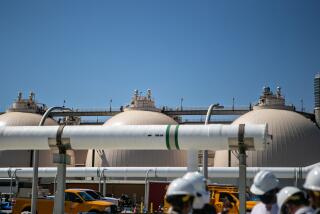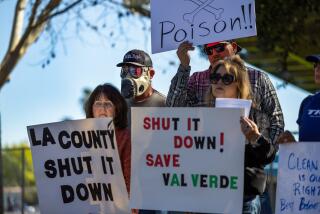Border Patrol agents say Tijuana River pollution is making them sick, and officials want it fixed
With health complaints continuing from Border Patrol agents who work the polluted areas of the Tijuana River Valley, the federal Customs and Border Protection agency is quietly trying to solve some of the problems of toxic sewage flows from Mexico — on its own.
The agency posted a notice on a federal contracting website last week seeking ideas from private industry on how to get a handle on cross-border sewage and hazardous materials, to which Border Patrol agents are routinely exposed.
The posting, formally known as a Request for Information, is the first step in what could become a full-blown contract award by the agency. The notice, titled “CBP Wastewater Initiative,” marks a move into an area — engineering and environmental solutions — in which the massive law enforcement agency does not normally delve.
It also marks a new opening in the escalating battle to address the decades-long problem of sewage flows through the valley. On Friday, a group of local governments, including Imperial Beach and the San Diego Unified Port District, announced a lawsuit against the federal government for failing to stop repeated discharges of polluted water into the valley.
That litigation could take years to resolve. Meanwhile, CBP is taking steps to at least alleviate — although not necessarily solve — the problems faced by its agents.
The move is likely a response to the increasing alarm sounded by the union for Border Patrol agents about health problems those assigned to Imperial Beach have experienced. Chris Harris, a union representative, said 83 agents have reported headaches, rashes, infections and other problems from contacting the polluted water and breathing in the dust in the valley.
Harris praised the agency for taking the lead. He said the union has met with Acting Commissioner Kevin McAleenan about the problem and is working on solutions.
“We don’t have engineers and scientists coming out of the woodwork,” Harris said of CBP. “They are saying we can’t wait any more. ... The EPA has not been helpful, and neither has the state.
“Can you imagine if you had a city where sewage was running down the streets, and it was the Police Department that said we are going to solve it? Where’s the water department or the sewer department? That’s the situation we are in.”
CBP said in a statement the agency isn’t going out on its own and still will work with other entities to seek a solution.
“This effort is only addressing one part of this complicated issue. CBP continues to work closely with its inter-agency partners at the Environmental Protection Agency [EPA], the Department of State [DoS], the Department of Treasury, and the United States International Boundary and Water Commission to develop a whole-of-government approach to resolving this large-scale infrastructure issue, to include robust engagement with the Government of Mexico.”
The agency said the cost of its efforts cannot be projected until solutions surface through the Request for Information process.
While health concerns of agents were a factor, the statement also said that CBP was “spurred by the continued risks the trans-boundary wastewater and hazardous flows pose to its mission as a whole, which includes not only the health and life safety risks to its U.S. Border Patrol Agents, but also its mission support personnel and individuals it apprehends in performance of its mission.”
The notice said that agents have to routinely inspect a network of culverts that run under the border fencing and barriers that carry water to look for unauthorized immigrants and smugglers.
While the culverts should be wet only during and after a storm, they often are carrying water during dry periods — a result of the lack of sewage infrastructure in Tijuana and illegal dumping, authorities have said. Several of the canyons that cross the border empty into collectors that capture the dry-weather flows for eventual pumping to a sewage treatment plant on the U.S. side of the border.
“Known and unknown contaminants pose operational and health risks to Border Patrol agents operating in the area,” the notice read.
The agency asks for a range of solutions, including automated equipment that would allow agents to stop patrolling the area on foot, as well as “engineering fixes to the canyon collector infrastructure to neutralize the risk of the hazardous material contained in the water or eliminate the water that pools in the collectors.”
The agency also wants ideas for a “suite of technology” that would allow agents to remotely monitor culvert grates and spillways, alerting “personnel of imminent risks so they can take precautionary measures to limit exposure.”
Ideas are due in mid-March. As a sign that the agency is seriously considering purchasing solutions there is an “industry day” scheduled for San Diego in April. At those events, government officials and contractors interested in a procurement discuss the goals of a project, its possible schedule and get feedback from industries about a proposal.
To read this article in Spanish click here
Moran writes for the San Diego Union-Tribune.
More to Read
Start your day right
Sign up for Essential California for news, features and recommendations from the L.A. Times and beyond in your inbox six days a week.
You may occasionally receive promotional content from the Los Angeles Times.






